Siberian Thrush Geokichla sibirica 白眉地鶇
Category I. Scarce passage migrant in autumn but rare in winter and spring, generally in areas of forest. Both G. s. davisoni and G. s. sibirica occur, though the latter appears to be most numerous, at least among males.
IDENTIFICATION
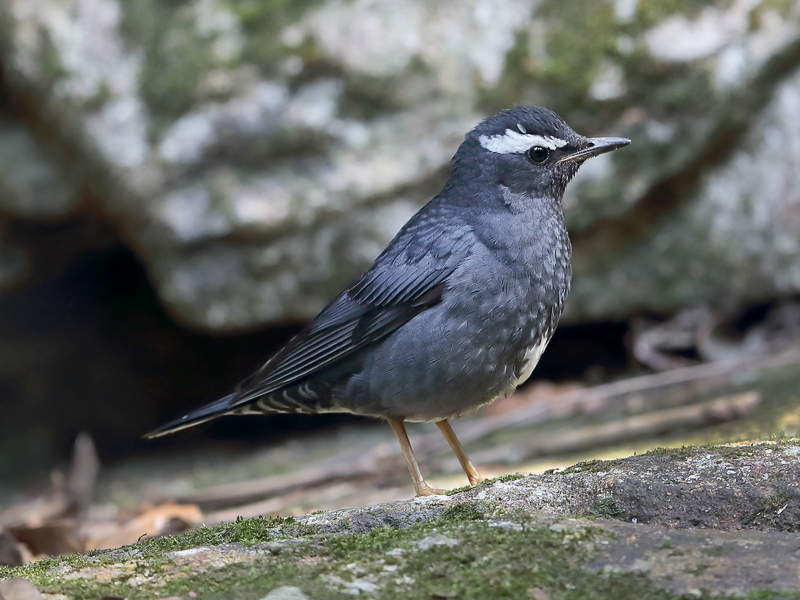
Feb. 2018, Michelle and Peter Wong. Adult male sibirica.
20-23 cm. Overall, rather a dark thrush, especially the male, adults of which are dark grey, with a darker head, subdued darker feather centres on the upperparts and slightly paler fringes on the underparts, and have a striking broad, tapered white supercilium that begins just in front of the eye. Seen well in flight both sexes show broad white bands on the underwing coverts separated by dark band.
There are two subspecies, both of which occur in HK. Male sibirica are slightly paler and more bluish-toned above and below and have more extensive white on the undertail coverts and vent that extends narrowly to reach the belly.
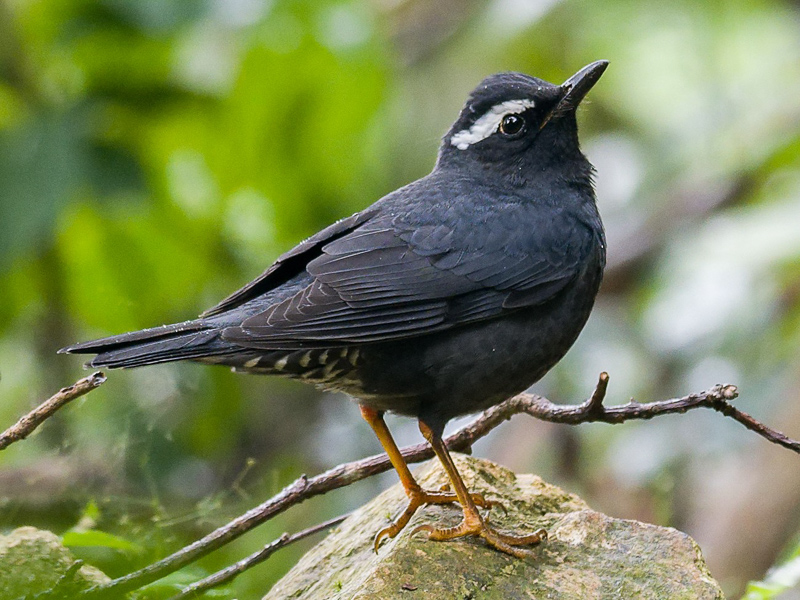
Oct. 2022, Anthony Szeto. Adult male davisoni.
Male davisoni are darker and colder above and below and usually have only narrow white tips to the undertail coverts and no white on the belly. Care should be taken to consider light conditions, especially of birds in deep forest shade.

Jan. 2013, Martin Hale. First-winter male sibirica.
The extensive area of white on the underparts and relatively pale bluish-toned upperparts indicates this is sibirica.

Apr. 2019, Kenneth Lam. Second calendar-year male davisoni.
The dark, sooty colouration of this bird and the limited amount of white on the flanks and belly indicates davisoni. The browner wings and wing coverts indicates it is in its second calendar-year.
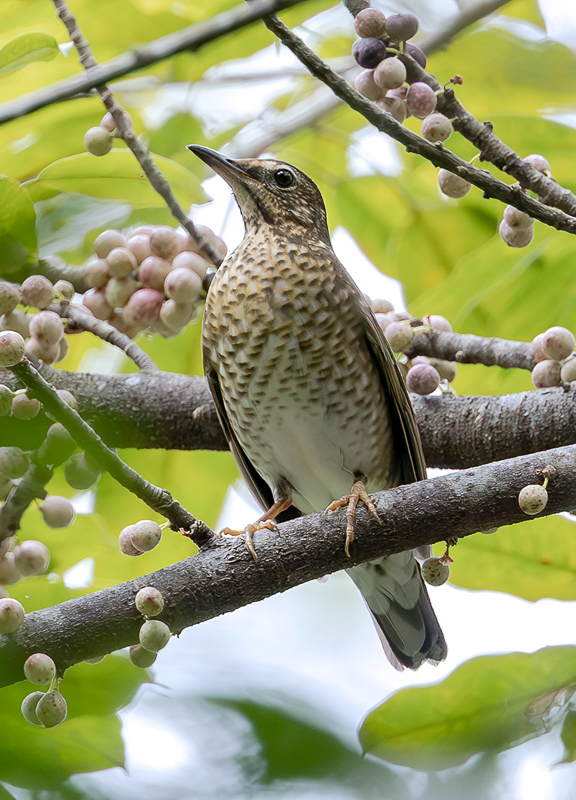
Oct. 2020, Michelle and Peter Wong. Probably female sibirica.
Females are olive-brown above with browner flight feathers and have a variegated head and chest, with darkly-scalloped underparts and a pale, mottled supercilium that begins narrowly above the bill base and broadens toward the eye.
It appears that, compared to the nominate taxon, female sibirica are paler above and below, but mainly across the chest where the pattern is one of brown bars against buff or whitish. In addition, the longest undertail coverts are largely white.
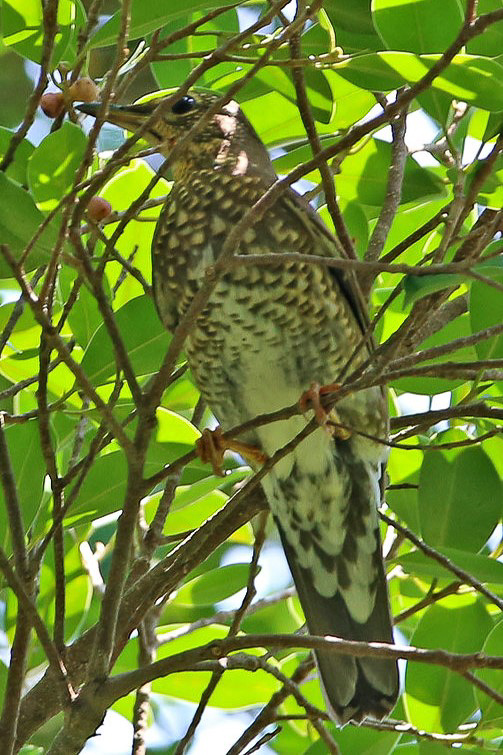
Oct. 2014, Vivian Cheung. Probably female davisoni.
Female davisoni are darker above and below, but mainly across the chest where the pattern is one of pale scallops on brown. In addition, they have large dark centres to the longest undertail coverts. However, identification of females is uncertain.
VOCALISATIONS
A short, high-pitched ‘tsip’ is uttered either perched or in flight.
A flight call more similar to Turdus thrushes is also uttered: ‘tzzzip’ or ‘tzzee’, rising in pitch initially.
DISTRIBUTION & HABITAT PREFERENCE
Occurs in mature forest with slightly less than 50% of records from the Tai Mo Shan massif. Has also occurred on Cheung Chau once, as well as at migrant sites such as Po Toi and Ho Man Tin.
OCCURRENCE
The first record occurred on 31 October 1958. Figure 1 illustrates the pattern of occurrence from 1999 to 2020 and indicates that Siberian Thrush is most common in autumn when it is a scarce passage migrant, with numbers highest in October. From midwinter to spring it is rare. The highest count is of four birds at Ng Tung Chai from 14 January to 7 February 1995 and on 31 December 2008; in addition, eight individuals were reported at Tai Lam Country Park from 8 October to 3 November 2019.
The earliest report in autumn is of two birds at Kap Lung on 16 September, while the latest in spring concerns a second calendar-year male at Ho Man Tin from 28 April to 9 May 2019.
Subspecific identity has been assigned to some birds photographed in recent years, but further data is required to clarify the proportions of each. Based on photographs of males it appears that substantially more common is sibirica, which has occurred evenly across the period from 17 October to 9 May. Photographs of male davisoni have been provided for four records during the period 14 October to 1 January.
At least twice as many reports concern males rather than females. Whether this is due to females being more unobtrusive due to their plumage or habits, or whether it indicates a difference in migratory routes is unknown.
BEHAVIOUR, FORAGING & DIET
Generally, rather unobtrusive and difficult to see. Observed foraging for invertebrates among leaf litter and in fruiting trees (e.g., Ficus sp.).
RANGE & SYSTEMATICS
Breeds central and east Siberia to the Sea of Okhotsk south to northeast China as far as east Hebei and from Sakhalin south to Japan; winters coastal south China (based on HK records) and Indochina south through peninsula Malaysia to Sumatra and Java (Collar 2020).
Two subspecies are recognised. The nominate breeds in most of the mainland part of the range from southern Siberia east to the Sea of Okhotsk and northeast China, while G. s. davisoni breeds in Sakhalin, the Kuril Islands and Japan.
CONSERVATION STATUS
IUCN: Least Concern. Population trend decreasing.
Figure 1.
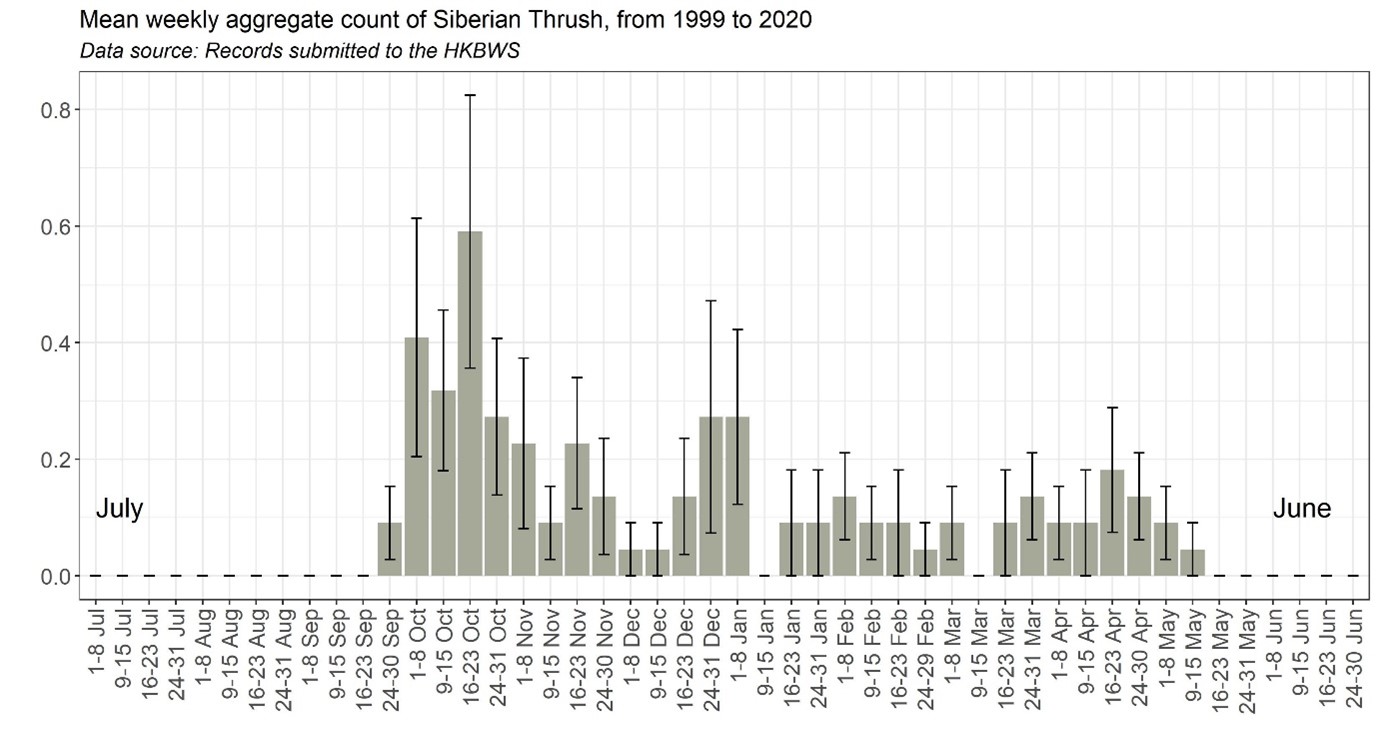
Collar, N. (2020). Siberian Thrush (Geokichla sibirica), version 1.0. In Birds of the World (J. del Hoyo, A. Elliott, J. Sargatal, D. A. Christie, and E. de Juana, Editors). Cornell Lab of Ornithology, Ithaca, NY, USA. https://doi.org/10.2173/bow.sibthr1.01

